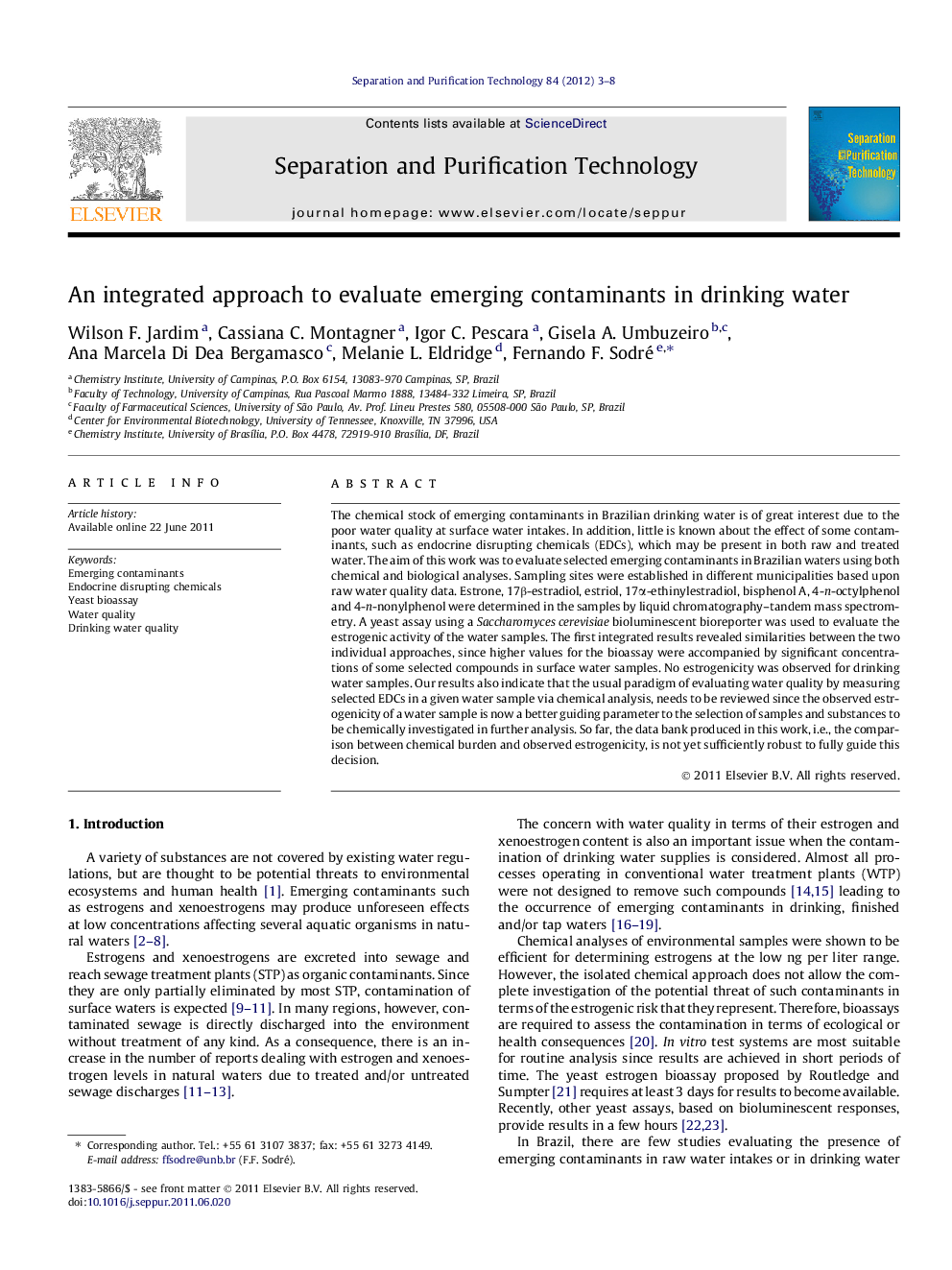| Article ID | Journal | Published Year | Pages | File Type |
|---|---|---|---|---|
| 642352 | Separation and Purification Technology | 2012 | 6 Pages |
The chemical stock of emerging contaminants in Brazilian drinking water is of great interest due to the poor water quality at surface water intakes. In addition, little is known about the effect of some contaminants, such as endocrine disrupting chemicals (EDCs), which may be present in both raw and treated water. The aim of this work was to evaluate selected emerging contaminants in Brazilian waters using both chemical and biological analyses. Sampling sites were established in different municipalities based upon raw water quality data. Estrone, 17β-estradiol, estriol, 17α-ethinylestradiol, bisphenol A, 4-n-octylphenol and 4-n-nonylphenol were determined in the samples by liquid chromatography–tandem mass spectrometry. A yeast assay using a Saccharomyces cerevisiae bioluminescent bioreporter was used to evaluate the estrogenic activity of the water samples. The first integrated results revealed similarities between the two individual approaches, since higher values for the bioassay were accompanied by significant concentrations of some selected compounds in surface water samples. No estrogenicity was observed for drinking water samples. Our results also indicate that the usual paradigm of evaluating water quality by measuring selected EDCs in a given water sample via chemical analysis, needs to be reviewed since the observed estrogenicity of a water sample is now a better guiding parameter to the selection of samples and substances to be chemically investigated in further analysis. So far, the data bank produced in this work, i.e., the comparison between chemical burden and observed estrogenicity, is not yet sufficiently robust to fully guide this decision.
Graphical abstractFigure optionsDownload full-size imageDownload as PowerPoint slideHighlights► Raw and drinking water samples from Brazilian intakes were selected in terms of their quality index. ► Estrogen and xenoestrogen levels were chemical and biologically assessed in the samples. ► Estrogenic effect measured in polluted intakes was not be fully explained by the tested chemicals. ► Estrogenicity is better guiding parameter to select samples and chemical substances to be investigated. ► The integrated approach can guide the development of adequate treatment technologies.
